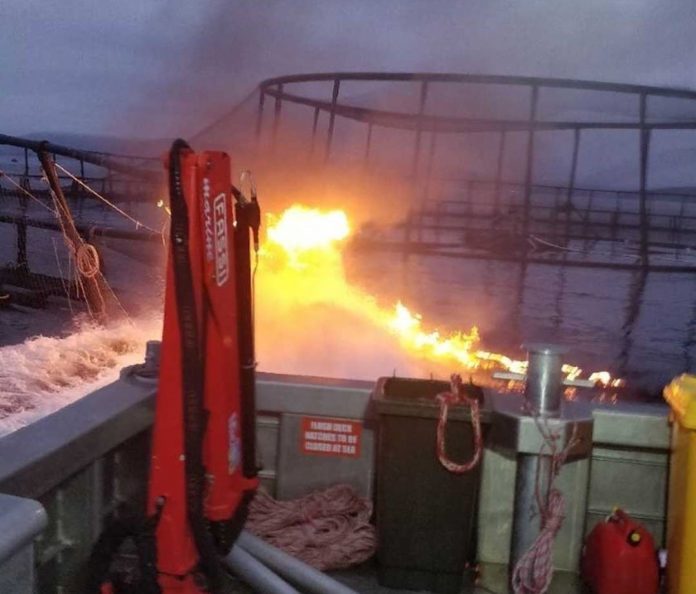The escape of more than 180,000 Atlantic salmon from southern Tasmanian fish farms in 2020 resulted in minimal impact to the environment, a new study has found.
Some 52,000 four-kilogram salmon swam free from a Huon Aquaculture farm in D’Entrecasteaux Channel in November after a pen caught alight. About a week later, a tear in a Huon Aquaculture pen at Storm Bay resulted in about 130,000 salmon, on average 500g in size, escaping.
An Institute for Marine and Antarctic Studies report, published this week, surveyed recreational fishers and sampled escaped salmon to help understand their survival rates. Author and Associate Professor Jeremy Lyle said the salmon appeared largely restricted to D’Entrecasteaux Channel, Storm Bay and associated freshwater tributaries.
Failure to thrive
According to Perth Now, Prof Lyle said salmon catches reported by the 211 surveyed fishers dropped significantly in the four to six weeks after the escapes.
“However, some salmon survived for almost four months, with small numbers possibly still alive after about five months,” he said.
“Despite the survival of some salmon for several months, evidence tells us the escapees didn’t thrive in the wild.
“We found there was very limited evidence to suggest active feeding on native species, meaning any ecological impacts caused by salmon preying on marine life were likely to be minimal.
“Based on this lack of feeding and general declines in physical condition, it was likely surviving fish exhausted energy reserves and were effectively wasting away.”
More data is needed
Scientists examined the stomach contents of 86 escaped salmon and found only two had food present. The study surveyed 211 anglers in a first phase between mid-December 2020 and February 20, 2021, with 82 and 27 responding to two follow-up surveys.
One in five of 133 “first phase” fishers who checked the stomach contents of their catch found food in at least one fish.
“More data is needed before we can accurately assess the environmental damage of these escapes,” Bob Brown Foundation campaigner Rebecca Howarth said.
“How were native fish populations impacted? How many different species were eaten? How were critical habitats like seagrass impacted? Where is the evidence that there is no damage?”
$1.8 million
Farmed salmon eat a feed mixture and are considered to lack the hunting instincts of their wild counterparts. Huon Aquaculture, which was in late 2021 acquired by Brazilian meat processing giant JBS, said the salmon escapes cost it $1.8 million.
Tasmania’s aquaculture industry, which produces more than 80,000 tonnes of salmon per year, has faced criticism in recent years over its environmental impact.
The federal and state governments in September announced an agreement to “support a framework” to deliver aquaculture in deeper waters.


